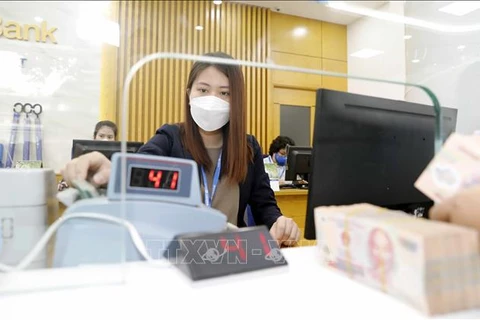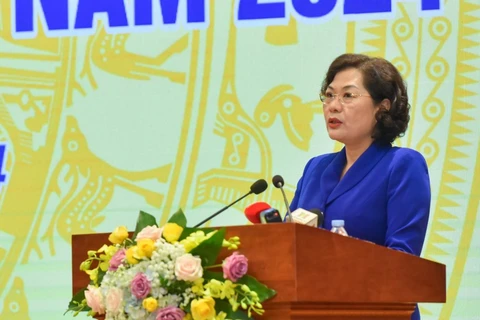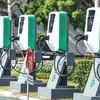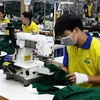
Hanoi (VNA) - Prime Minister Pham Minh Chinh chaired a meeting in Hanoi on May 16 with ministries and agencies to discuss the coordination of fiscal and monetary policies aimed at maintaining macroeconomic stability, controlling inflation and promoting growth.
Amid ongoing global uncertainties, PM Chinh emphasised the need for proactive and flexible management of fiscal and monetary policies. He called for a focused and prioritised approach, ensuring that fiscal policy tools are synchronised with monetary and other macroeconomic policies in a harmonious and suitable manner.
The PM stressed the need to prevent the exchange rate from affecting macroeconomy and inflation control, while requesting that the lending rates should be reduced by 1-2% to stimulate production and trade. He set a target for credit growth of 5-6% right in the second quarter.
Additionally, he urged efforts to increase State budget revenue and manage State budget expenditures strictly, thus improving the efficiency of budget management, allocation and use while tightening financial discipline and order.
The leader also directed the continued promotion of public investment, with a focus on key national infrastructure, inter-regional socio-economic development, and social housing projects. He suggested considering the issuance of bonds and pooling all social resources, with an initial aim of raising about 100 trillion VND (4.16 billion USD) for projects related to green transition, digital transformation, and social housing during the 2021-2025 period.
Regarding gold market management, he instructed the immediate adoption of various tools and measures to regulate and stabilise the gold market more effectively and in a timely manner./.






















